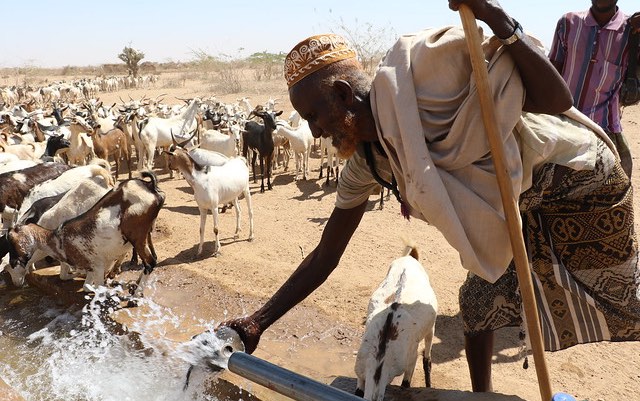Extreme weather events and other climate change-linked disasters have devastated communities globally: Be it cyclones along the coast of Southern Africa, flooding in parts of Canada, drought-induced wildfires in California, or the recent El Niño (ENSO) induced drought in Eastern and Southern Africa that affected 60 million people.
These powerful events trigger humanitarian disasters and wreak economic havoc. They also raise an important question: How can we increase resilience to climate-induced shocks—particularly in poorer countries that are most vulnerable?
Our new research, Building Resilience to Climate Shocks in Ethiopia, looks in detail into this question with a focus on the 2015/16 ENSO event that led to erratic rains, causing crop failure, spikes in food insecurity, and acute undernutrition.
While ENSO is a recurring climate pattern involving changes in the temperature of waters in the central and eastern Pacific Ocean, the 2015/16 event was particularly strong. As a consequence of prolonged drought, 10 million Ethiopians required emergency food aid or other assistance on top of the 8 million already participating in Ethiopia’s social protection program.
Building resilience
The findings are positive. They show that resilience measures that protect agriculture and the people most vulnerable to weather shocks can substantially reduce the negative impact of climate shocks—and drought in particular.
But designing resilience measures requires better data and research. When we re-analyzed the 2015/16 ENSO event, we found that crop yield losses were concentrated in several sub-regions: The greatest impacts occurred in the lowlands where cereal production dropped by nearly 10% and livestock herds shrank by 23%.
At a national level the impact was relatively small, lowering gross domestic product (GDP) by 1.6%. Agricultural GDP, however, fell by much more—3.6%—and GDP in the drought-prone lowlands fell dramatically, by over 11%.
A full-blown crisis was prevented because of the existing Ethiopian government and development partner-supported programs in the country. Public safety net and agricultural support programs, such as the Productive Safety Net Programme, the Programme of Adaptation to Climate Change, the Agricultural Growth Programme, and various irrigation investments helped mitigate the climate shock.
In the country’s pastoralist areas, measures such as fodder cultivation and banks, improvement of livestock markets, water resources management, and savings and credit institutions were the bulwark of climate resilience. However, targeting of these programs can be improved, especially in the drought-prone lowland areas, where livestock recovery takes longer and better access to services such as education, healthcare, credit, energy, and infrastructure are urgently needed.
To reduce adverse yield impacts under both El Niño and La Niña climate shocks, Ethiopia must continue on its path to agricultural intensification, which has already paid off. Annual cereal production grew to 7.4% over the last decade, up from 3.9% during 1996-2006.
To consolidate these gains, a combination of measures such as increased application of nitrogen fertilizer, integrated soil fertility management, and irrigation will be particularly effective. We also explored if programs such as food import subsidies, grain distribution, and social transfers have the potential to help further.
We found that food import subsidies reduce consumption losses, and grain distribution and cash transfers reduce losses for poorer households. If implemented, collectively, these programs could largely eliminate welfare losses of poorer households, but none are effective in reducing GDP losses.
Is it possible for Ethiopia—or any country—to become fully independent of emergency support during extreme climate events? We think this is unlikely. But targeted programs strengthening agricultural and economic growth can substantially alleviate the shock.
Improved data collection, developing monitoring tools and indicators for resilience. and reinforcing coordination of resilience programming can build resilience.
In addition, strengthening microfinance institutions, input and output markets, and associated rural infrastructure; continued investment in agriculture research and development; and supporting the creation of livelihood options outside agriculture may also help to mitigate the impact of climate-related disasters.
Ultimately, any long-term solution to building resilience requires a flourishing agricultural sector achieving substantially higher productivity using climate-resilient, sustainable practices, developing better economic linkages and supporting increased household incomes in rural areas.
Claudia Ringler is Deputy Director of IFPRI’s Environment Production and Technology Division; Turhan Saleh is the Resident Representative, UNDP Country Office, Ethiopia. This post first appeared in The Telegraph.
This work was implemented as part of the CGIAR Research Programs on Climate Change, Agriculture and Food Security (CCAFS), and Policy, Institutions, and Markets (PIM) led by IFPRI.







